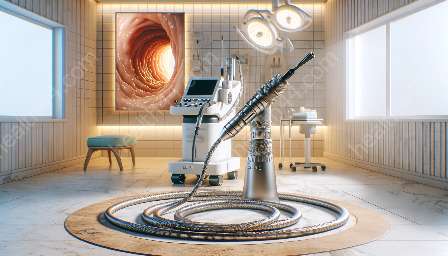Among the many remarkable medical devices and equipment, gastrointestinal endoscopes play a crucial role in diagnosing and treating a wide range of digestive system disorders. This comprehensive guide explores the technology, applications, and impact of endoscopy in the field of healthcare.
Understanding Gastrointestinal Endoscopes
Gastrointestinal endoscopes are specialized medical devices used to visualize the interior of the digestive system. These devices consist of a long, flexible tube with a light and camera at the tip, enabling healthcare professionals to see detailed images of the esophagus, stomach, and intestines. The endoscope may also have additional channels for inserting instruments to perform minimally invasive procedures such as biopsies or removal of polyps.
The Technology Behind Endoscopy
The technological advancements in gastrointestinal endoscopes have revolutionized the way digestive system disorders are diagnosed and treated. Modern endoscopes utilize high-definition imaging systems, allowing for clear visualization of the gastrointestinal tract. In addition, some endoscopes incorporate features such as narrow-band imaging (NBI) to enhance the detection of abnormalities and improve diagnostic accuracy.
Applications of Gastrointestinal Endoscopes
Gastrointestinal endoscopes are used in a variety of medical procedures, including:
- Diagnostic Endoscopy: Gastroenterologists use endoscopes to examine the digestive system and diagnose conditions such as ulcerative colitis, Crohn's disease, and gastrointestinal bleeding.
- Therapeutic Endoscopy: Endoscopic procedures enable the removal of polyps, treatment of gastrointestinal bleeding, and the placement of stents to alleviate obstructions in the digestive tract.
- Screening Endoscopy: Screening endoscopies are performed to detect early signs of gastrointestinal cancers, including esophageal, gastric, and colorectal cancers.
Impact on Healthcare
The widespread use of gastrointestinal endoscopes has significantly improved patient care and outcomes in the field of gastroenterology. By enabling early detection and treatment of gastrointestinal conditions, endoscopy has contributed to reduced morbidity and mortality rates associated with digestive system disorders.
Furthermore, the minimally invasive nature of endoscopic procedures results in shorter recovery times and reduced healthcare costs for patients. As a result, endoscopy has become an invaluable tool in the management of gastrointestinal diseases.
Conclusion
Gastrointestinal endoscopes are indispensable medical devices that have had a profound impact on the diagnosis and treatment of digestive system disorders. As technology continues to advance, the capabilities of endoscopes are likely to expand, further enhancing their clinical utility and benefit to patients.


